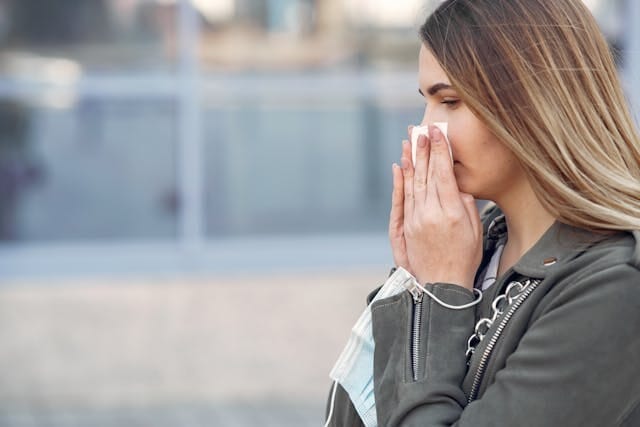
What is a Cold Allergy? What are the Symptoms and Remedies?
Time to read 3 min
Time to read 3 min
In some cases exposure to cold can lead to symptoms such as sneezing, fever, skin irritation, redness, and joint aches. These may be the symptoms of cold urticaria and not of the common cold. In the event that these symptoms are present to the extent of fatigue and fever, then you may be allergic to cold weather.
You can check your symptoms over time, to know is it a cold or an allergy to the cold weather or wind. With a cold, the symptoms are limited to runny nose and sneezing. However, with colds and allergies, you should always be careful of symptoms that can affect your immune system.
You can focus on the following remedies that you can prepare at home when you feel like you have a cold allergy. A cold urticaria can be managed through home remedies if you have no other conditions or symptoms that can lead to risk factors.
You can add lemon and honey to warm water as a quick way to relax the system and improve immune activity. You can add a range of active herbs to the drink and keep sipping it to alleviate any irritation.
You can take antibiotics after consulting with your doctor, if there is an allergic reaction. You can also opt for antibiotics when your symptoms match that of an allergic reaction and your doctor recommends it.
Antihistamines are generally prescribed for allergies and severe allergic reactions. You can take antihistamines when there is a risk of cold allergy to worsen.
You can take anti-pain or painkillers when there is significant joint pain or mobility issues. You can also take anti pain medication when there is an issue with headaches related to the cold allergy as well.
Topical creams can be applied if there is a burning sensation on the arms or legs of the individual for cold allergy. You can apply topical creams when there is an issue with skin redness after consulting with your doctor.
These are the main symptoms of a cold allergy that can go beyond a normal illness or condition. You can distinguish the cold allergy based on the following signs.
You can get red spots and hives which can spread all around your arms and legs, when there is an allergic reaction to the cold weather. You can also get a test done to check for signs of allergies if you have other symptoms.
You can experience a burning sensation when you have a cold allergy. You can also experience this sensation when you're in a warm environment away from the cold, but the allergic reaction hasn't decreased.
You can experience fever and cold when there is an allergic reaction. You can feel this within a few hours of cold exposure, and can be distinguished from normal cold fever by other symptoms.
You can also get throat irritation sensation, which can feel like a scratch in the throat. You can also get redness around the throat region with hives or rashes.
You can also get signs of swelling around the arms, as a sign of cold exposure allergy. You can add a hot water pad around the area of the swelling to help with the symptoms.
You can experience joint problems and issues with joint mobility when there is a cold allergy reaction. You can also experience this as joint pain that is dull and a response to an allergy.
You may experience body pain which can lead to issues with muscle tightness and pain. You can also get fatigue-like symptoms along with the body pain.
* * Medical Disclaimer - The following information is for educational purposes only. No information provided on this website, including text, graphic, and images, are intended as substitutes for professional medical advice. Please consult with your doctor about specific medical advice pertaining to your condition(s).
